#Joseph Nicolaus
Text
Tyshawn Jones - The General
104 notes
·
View notes
Text
Stifel Nicolaus & Co. Fined $2.5 Million For Allowing Broker to Make Unauthorized Trades
Stifel Nicolaus Investigation
May 2023- Taunton, MA
According to publicly available records, Stifel Nicolaus & Co. has been fined $2.5 million by Massachusetts securities regulator William Galvin for ignoring a series of red flags that warned that elderly Massachusetts residents as well as non-profit organizations and churches were being charged excessive and unauthorized fees by one of their…
View On WordPress
#finra arbitration attorney#Joseph Crespi#Joseph Crespi investigation#recover investment losses#securities attorney#Stifel Nicolaus#Stifel Nicolaus Investigation#stifel nicolaus lawsuit#stockbroker malpractice#unauthorized trading#william galvin
0 notes
Text
Technology from 1870-1899 (For Encanto fic writers)
So, A mutual of mine @miracles-and-butterfliess pointed out that everyone (including me) tends to forget that Encanto was literally made when the triplets were born. Which is literally 1900 or 1901. Regardless, it was the very beginning of the 19th century so let me tell you about the technology/things they would/wouldn’t have. (And please keep in mind that most of these may or may not have been imported into Colombia yet.)
1870 - 1879
1872—A.M. Ward creates the first mail-order catalog. NO
1873—Joseph Glidden invented barbed wire. NO
1876—Alexander Graham Bell patents the telephone. NO
1876—Nicolaus August Otto invents the first practical four-stroke internal combustion engine. NO
1876—Melville Bissell patents the carpet sweeper. NO?
1878—Thomas Edison invents the cylinder phonograph (known then as the tin foil phonograph). MAYBE
1878—Eadweard Muybridge invents moving pictures. NO?
1878—Sir Joseph Wilson Swan invents the prototype for a practical electric lightbulb. YES?
1879—Thomas Edison invented the first commercially viable incandescent electric light bulb. NO?
1880 - 1889
1880—The British Perforated Paper Company debuts toilet paper. YES
1880—English inventor John Milne creates the modern seismograph. NO
1881—David Houston patents camera film in roll format. NO?
1884—Lewis Edson Waterman invents the first practical fountain pen. YES
1884—L. A. Thompson built and opened the first roller coaster in the United States at a site on Coney Island, New York. NO
1884—James Ritty invents a functional mechanical cash register. YES?
1884—Charles Parson patents the steam turbine. NO
1885—Karl Benz invented the first practical automobile powered by an internal-combustion engine. NO (even before Encanto, Alma’s town looked rural so I doubt the automobile reached them yet.)
1885—Gottlieb Daimler invented the first gas-engine motorcycle. NO
1886—John Pemberton introduces Coca-Cola. NO
1886—Gottlieb Daimler designs and builds the world's first four-wheeled automobile. NO
1887—Heinrich Hertz invents radar. NO
1887—Emile Berliner invented the gramophone. YES
1887—F.E. Muller and Adolph Fick invented the first wearable contact lenses. NO
1888—Nikola Tesla invents the alternating current motor and transformer. NO
1890 - 1899
1891—Jesse W. Reno invents the escalator. NO
1892—Rudolf Diesel invents the diesel-fueled internal combustion engine, which he patents six years later. NO
1892—Sir James Dewar invents the Dewar vacuum flask. NO
1893—W.L. Judson invents the zipper. NO (zippers didn’t become popular globally until a little bit later; buttons, ribbons/laces and whatever else were still the norm/in fashion for fastening and tying (which is still the case in some places today)
1895—Brothers Auguste and Louis Lumière invent a portable motion-picture camera that doubles as a film-processing unit and projector. The invention is called the Cinematographe and using it, the Lumières project the motion picture for an audience. NO?
1899—J.S. Thurman patents the motor-driven vacuum cleaner. NO (if you're running from being killed, the last thing you're going to bring is a vacuum cleaner)
I remember a post listing the sort of jobs there would be in Encanto but I forgot so I’ll just list the ones I know (let me know if I need to add anything.):
Seamstress/tailor
Embellisher
Field worker
Teacher (of any kind; music, dance, art, etc)
Woodworker - wood carver
Toy maker
Construction worker
Joining a Local band/ Orchestra - being apart of a choir
Carpenter
Metal worker
Jeweler (though I’m not sure if Jewelery of the diamond/gem kind is common in Encanto)
bladesmith/ knifemaker
Inventor? (Inventors should exist in Encanto by now…just one other genius besides Mirabel?)
I know some of these are very obvious but I’m just giving people options okay?
@miracles-and-butterflies you seem to know a lot more about this kind of stuff so if you have anything to add/take away or me to fix please let me know. I tried to search up “When was X invention imported into Colombia” and literally nothing of use comes up.
#camilo madrigal#bruno madrigal#mirabel madrigal#dolores madrigal#antonio madrigal#isabela madrigal#pepa madrigal#encanto 2021#encanto au#encanto fanfic
103 notes
·
View notes
Text
Os 100 livros para ler antes de morrer
Os livros lidos estão riscados!
A arte da guerra (Sun Tzu)
Hamlet (william Shakespeare)
O banquete (Platão)
A divina comédia - Inferno (são 3 livros) (Dante Alighieri)
O processo de Kafka (Kafka)
O morro dos ventos uivantes (Emilly Bronte)
O pequeno príncipe (Antoine de Saint – Exupéry)
Orgulho e preconceito (Jane Austen)
O princípe (Nicolau Maquiavel)
A Odisseia (Homero)
O vermelho e o negro (Stendhal)
O velho e o mar (Ernest Hemingwai)
Homem invisível (Ralph Ellison)
Dom Quixote (Miguel de Cervantes)
Moby Dick (Herman Melville)
1984 (George Orwell)
Crime e castigo (Fyodor M. Dostoyevsky)
A Ilíada (Homero)
Madame Bovary (Gustave Flaubert)
A montanha mágica (Thomas Mann)
Cem anos de solidão (Gabriel Garcia Marquez)
Otelo (William Shakespeare)
Ulysses (James Joyce)
Guerra e Paz (Leo Tolstoy)
As viagens de Gulliver (Jonathan Swift)
O nome da rosa (Umberto Eco)
Alice no País das maravilhas (Lewis Carroll)
Vinte mil léguas submarinas (Julio Verne)
Leviatã (Thomas Hobbes)
Fahrenheit 451 (Ray Bradbury)
Armas, germes e aço: os destinos das sociedades humanas (Jared Diamond)
O diário de Anne Frank (Anne Frank)
O conto da aia (Margaret Atwood)
O iluminado (Stephen King)
O sol é para todos (Harper Lee)
A revolução dos bichos (George Orwell)
A flecha de Deus (Chinua Achebe)
Utopia (Thomas More)
Gargantua (François Rabelais)
Pantagruel (François Rabelais)
Ensaio sobre a Cegueira (José Saramago)
Édipo Rei (Sófocles)
Os miseráveis (Victor Hugo)
Os Lusíadas (Luis de Camões)
Os três mosquiteiros (Alexandre Dumas)
Decamerão (Giovanni Boccaccio)
As mil e uma noites (Sem autor)
Amor no tempo do cólera (Gabriel Garcia Marquez)
A epopeia de Gilgamesh (Sem autor)
O livro do Desassossego (Fernando Pessoa)
Livro de jó (Bíblia Sagrada)
O retrato de Dorian Gray (Oscar Wilde)
Ismael: um romance da condição humana (Daniel Quinn)
Medeia (Euripides)
Robinson Crusoé (Daniel Defoe)
Contos de Andersen (Hans Christian Andersen)
Conde de Monte Cristo (Alexandre Dumas)
O mundo de Sofia (Jostein Gaarder)
A condição humana (Hannah Arendt)
Laranja mecânica (Anthony Burgess)
O elogio da loucura (Erasmo de Roterdã)
A sangue frio (Truman Capote)
Ardill 22 (Joseph Heller)
Adeus às armas (Ernest Hemingway)
Admirável mundo novo (Aldous Huxley)
Todos os Contos (Edgar Allan Poe)
A morte de Ivan Ilyuich (Leo Tolstoy)
Mahabharata (sem autor)
Contos de Canterbury (Geoffrey Chaucer)
Os irmãos Karamazov (Fyodor M Dostoyevsky)
Tom Jones (Henry Fielding)
A consciência de Zeno (Italo Svero)
Amada (Toni Morrison)
Os filhos da meia-noite (Salman Rushdie)
O tambor (Gunter Grass)
O idiota (Fyodor M Dostoyevsky)
As metamorfoses (Ovídio)
O som da montanha (Yasunari Kawabata)
Ensaios (Michel de Montaigne)
Senhor das moscas (William Golding)
As vinhas da Ira (John Steinbeck)
O grande Gatsby (F. Scott Fitzgerald)
O jogo da amarelinha (Julio Cortázar)
O estrangeiro (Albert Camus)
Memórias de Adriano (Marguerite Yourcenar)
O lobo da Estepe (Herman Hesse)
O apanhador no campo de Centeio (J. D. Salinger)
Rumo o farol (Virginia Woolf)
O castelo (Franz Kafka)
Anna Karenina (Leo Tolstoy)
O som e a fúria (William Faulkner)
O homem sem qualidades (Robert Musil)
As aventuras de Huckleberry Finn (Mark Twain)
Almas mortas (Nikolai Gogol)
Pedro Paramo (Juan Rulfo)
Folhas de relva (Walt Whitman)
Viagem ao fim da noite (Louis Ferdinand Celine)
Lolita (Vladimir Nabokov)
Eneida (Virgílio)
Em busca do tempo perdido (7 livros) (Marcel Proust)
21 notes
·
View notes
Text
Written as a poem in 1818 by pastor Joseph Mohr of the St. Nicolaus Kirche in Oberndorf (Austria). His organist Franz Gruber wrote the music. Together they sang it during mass on Christmas eve, accompanied on guitar as the organ didn't function. For three years the song Stille Nacht Heilige Nacht was only heard in this tiny Tirolian place. Organ builder Karl Mauracher from Fügen was the first outstander who heard the song while fixing Gruber's pipe organ and he took the sheet music home. In 1831 Mauracher arranged it for choir. Four children of the Strasser family sang it in 1832 on the well visited Leipziger Messe. There they got an invitation to come and sing it in Vienna during next Christmas eve, attended by the royal family. That's how it got known all over. In 1839 another family choir sang it in New York.
Merry Christmas Everyone
#Ernestine Schumann-Heink#contralto#dramatic contralto#opera singer#classical singer#aria#opera#bel canto#classical#classical studies#classical music#SILENT NIGHT#Silent Night#Christmas carol#Christmas#Stille Nacht#heilige Nacht#Holy Night#Christmas Eve#singer
26 notes
·
View notes
Text
Events 3.5
363 – Roman emperor Julian leaves Antioch with an army of 90,000 to attack the Sasanian Empire, in a campaign which would bring about his own death.
1046 – Nasir Khusraw begins the seven-year Middle Eastern journey which he will later describe in his book Safarnama.
1279 – The Livonian Order is defeated in the Battle of Aizkraukle by the Grand Duchy of Lithuania.
1496 – King Henry VII of England issues letters patent to John Cabot and his sons, authorising them to explore unknown lands.
1616 – Nicolaus Copernicus's book On the Revolutions of the Heavenly Spheres is added to the Index of Forbidden Books 73 years after it was first published.
1766 – Antonio de Ulloa, the first Spanish governor of Louisiana, arrives in New Orleans.
1770 – Boston Massacre: Five Americans, including Crispus Attucks, are fatally shot by British troops in an event that would contribute to the outbreak of the American Revolutionary War (also known as the American War of Independence) five years later.
1811 – Peninsular War: A French force under the command of Marshal Victor is routed while trying to prevent an Anglo-Spanish-Portuguese army from lifting the Siege of Cádiz in the Battle of Barrosa.
1824 – First Anglo-Burmese War: The British officially declare war on Burma.
1825 – Roberto Cofresí, one of the last successful Caribbean pirates, is defeated in combat and captured by authorities.
1836 – Samuel Colt patents the first production-model revolver, the .34-caliber.
1850 – The Britannia Bridge across the Menai Strait between the island of Anglesey and the mainland of Wales is opened.
1860 – Parma, Tuscany, Modena and Romagna vote in referendums to join the Kingdom of Sardinia.
1868 – Mefistofele, an opera by Arrigo Boito, receives its premiere performance at La Scala.
1872 – George Westinghouse patents the air brake.
1906 – Moro Rebellion: United States Army troops bring overwhelming force against the native Moros in the First Battle of Bud Dajo, leaving only six survivors.
1912 – Italo-Turkish War: Italian forces are the first to use airships for military purposes, employing them for reconnaissance behind Turkish lines.
1931 – The British Raj: Gandhi–Irwin Pact is signed.
1933 – Adolf Hitler's Nazi Party receives 43.9% at the Reichstag elections, which allows the Nazis to later pass the Enabling Act and establish a dictatorship.
1936 – First flight of K5054, the first prototype Supermarine Spitfire advanced monoplane fighter aircraft in the United Kingdom.
1939 – Spanish Civil War: The National Defence Council seizes control of the republican government in a coup d'etat, with the intention of negotiating an end to the war.
1940 – Six high-ranking members of the Soviet politburo, including Joseph Stalin, sign an order for the execution of 25,700 Polish intelligentsia, including 14,700 Polish POWs, in what will become known as the Katyn massacre.
1942 – World War II: Japanese forces capture Batavia, capital of Dutch East Indies, which is left undefended after the withdrawal of the KNIL garrison and Australian Blackforce battalion to Buitenzorg and Bandung.
1943 – First Flight of the Gloster Meteor, Britain's first combat jet aircraft.
1944 – World War II: The Red Army begins the Uman–Botoșani Offensive in the western Ukrainian SSR.
1946 – Cold War: Winston Churchill coins the phrase "Iron Curtain" in his speech at Westminster College, Missouri.
1 note
·
View note
Text
THE 236 GREATEST PERSONALITIES IN THE ENTIRE KNOWN HISTORY/COLLECTIVE CONSCIOUSNESS OF THIS WORLD! (@INDIES)
i.e. THE 236 GREATEST PERSONALITIES IN WORLD HISTORY! (@INDIES)
Rajesh Khanna
Lionel Messi
Leonardo Da Vinci
Muhammad Ali
Joan of Arc
William Shakespeare
Vincent Van Gogh
Online Indie
J. K. Rowling
David Lean
Nadia Comaneci
Diego Maradona
Wolfgang Amadeus Mozart
Meena Kumari
Julius Caesar
Harrison Ford
Ludwig Van Beethoven
William W. Cargill
Fritz Hoffmann-La Roche
Samuel Curtis Johnson
Sam Walton
John D. Rockefeller
Andrew Carnegie
Roy Thomson
Tim Berners-Lee
Marie Curie
James J. Hill
Cornelius Vanderbilt
Roman Polanski
Samuel Slater
J. P. Morgan
Cary Grant
Dmitri Mendeleev
John Harvard
Alain Delon
Ramakrishna Paramhansa (Official God)
The Lumiere Brothers, Auguste & Louis
Carl Friedrich Benz
Michelangelo
Maharishi Mahesh Yogi
Ramana Maharishi
Mark Twain
Swami Sri Yukteswar Giri
Bruce Lee
Bhagwan Krishna (Official God)
Charlemagne
Rene Descartes
John F. Kennedy
Bhagwan Ganesha (Official God)
Walt Disney
Albert Einstein
Nikola Tesla
Alfred Hitchcock
Pythagoras
William Randolph Hearst
Cosimo de’ Medici
Johann Sebastian Bach
Alec Guinness
Nostradamus
Christopher Plummer
Archimedes
Jackie Chan
Guru Dutt
Amma Karunamayi/ Mata Parvati (Official God)
Peter Sellers
Gerard Depardieu
Joseph Safra
Robert Morris
Sean Connery
Petr Kellner
Aristotle Onassis
Usain Bolt
Jack Welch
Alfredo di Stefano
Elizabeth Taylor
Michael Jordan
Paul Muni
Steven Spielberg
Louis Pasteur
Ingrid Bergman
Norma Shearer
Dr. B. R. Ambedkar
Ayn Rand
Jesus Christ (Official God)
Luciano Pavarotti
Alain Resnais
Frank Sinatra
Allah (Official God)
Richard Nixon
Charlie Chaplin
Thomas Alva Edison
Alexander Graham Bell
Wright Brothers
Arjun (of Bhagwan Krishna’s Gita)
Jim Simons
George Lucas
Swami Sri Lahiri Mahasaya
Carl Lewis
Brett Favre
Helen Keller
Bernard Mannes Baruch
Buddha (Official God)
Hugh Grant
K. L. Saigal
Roger Federer
Rash Behari Bose
Tiger Woods
William Blake
Jesse Owens
Claude Miller
Bernardo Bertolucci
Subhash Chandra Bose
Satyajit Ray
Hippocrates
Chiang Kai-Shek
John Logie Baird
Geeta Dutt
Raphael (painter)
Bhagwan Shiva (Official God)
Radha (Ancient Krishna devotee)
George Orwell
Jorge Paulo Lemann
Catherine Deneuve
Pierre-Auguste Renoir
Bill Gates
Bhagwan Ram (Official God)
Michael Phelps
Michael Faraday
Audrey Hepburn
Dalai Lama
Grace Kelly
Mikhail Gorbachev
Vladimir Putin
Galileo Galilei
Gary Cooper
Roger Moore
John Huston
Blaise Pascal
Humphrey Bogart
Rudyard Kipling
Samuel Morse
Wayne Gretzky
Yogi Berra
Barry Levinson
Patrice Chereau (director)
Jerry Lewis
Louis Daguerre
James Watt
Henri Rousseau
Nikita Krushchev
Jack Dorsey
Dev Anand
Elia Kazan
Alexander Fleming
David Selznick
Frank Marshall
Viswanathan Anand
Major Dhyan Chand
Swami Vivekananda
Felix Rohatyn
Sam Spiegel
Anand Bakshi
Victor Hugo
Bhagwan Sri Sathya Sai Baba (Official God)
Steve Jobs
Srinivasa Ramanujam
Lord Hanuman
Stanley Kubrick
Giotto
Voltaire
Diego Velazquez
Ernest Hemingway
Francis Ford Coppola
Michael Douglas
Kirk Douglas
Mario Lemieux
Kishore Kumar
James Stewart
Douglas Fairbanks
Confucius
Babe Ruth
Raj Kapoor
Titian aka Tiziano Vecelli
El Greco
Francisco de Goya
Jim Carrey
Mohammad Rafi
Steffi Graf
Pele
Gustave Courbet
Rani Laxmibai of Jhansi
Milos Forman
Steve Wozniak
Georgia O’ Keeffe
Mala Sinha
Aryabhatta
Magic Johnson
Patanjali
Leo Tolstoy
Tansen
Henry Fonda
Albrecht Durer
Benazir Bhutto
Cal Ripken Jr
Samuel Goldwyn
Mumtaz (actress)
Panini
Nicolaus Copernicus
Pablo Picasso
George Clooney
Olivia de Havilland
Prem Chand
Imran Khan
Pete Sampras
Ratan Tata
Meerabai (16th c. Krishna devotee)
Queen Elizabeth II
Pope John Paul II
James Cameron
Jack Ma
Warren Buffett
Romy Schneider
C. V. Raman
Aung San Suu Kyi
Benjamin Netanyahu
Frank Capra
Michael Schumacher
Steve Forbes
Paramhansa Yogananda
Tom Hanks
Kamal Amrohi
Hans Holbein
Shammi Kapoor
Gerardus Mercator
Edith Piaf
Bhagwan Shirdi Sai Baba (Official God)
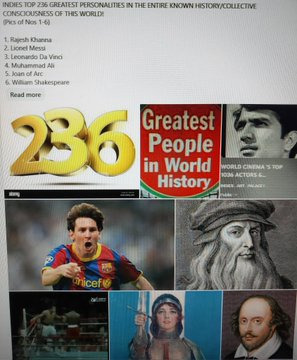


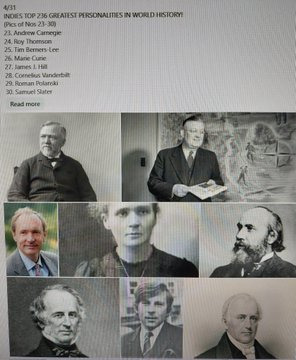
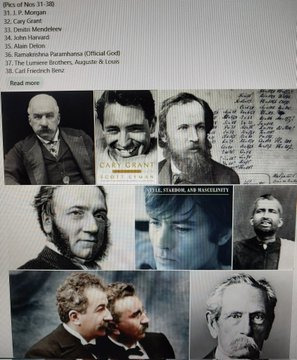
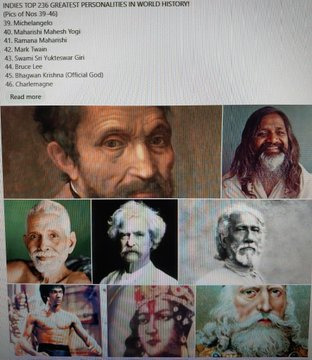
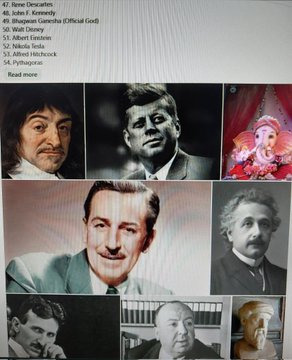

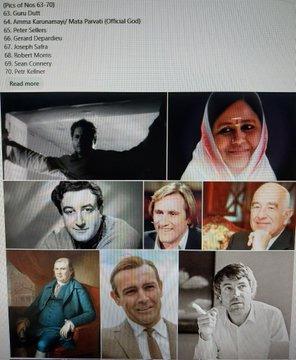



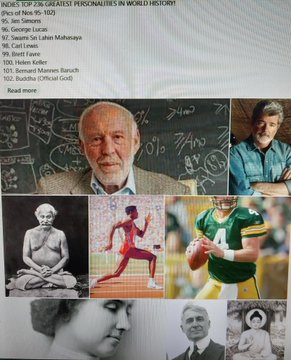
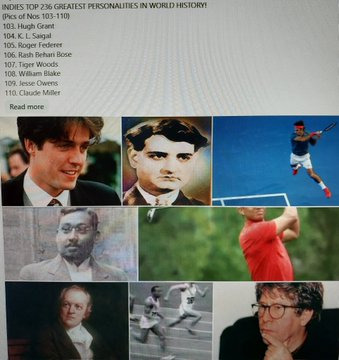
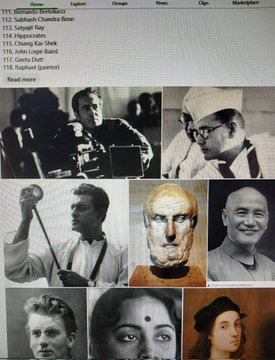

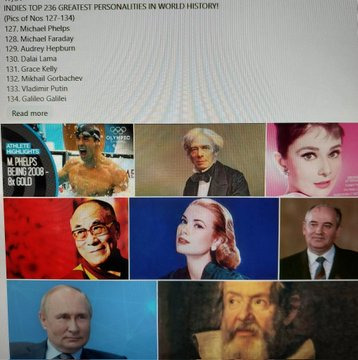

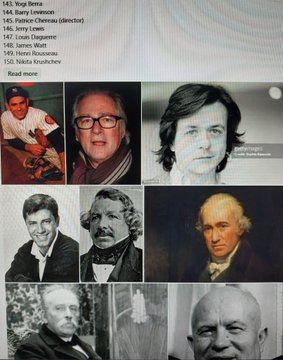
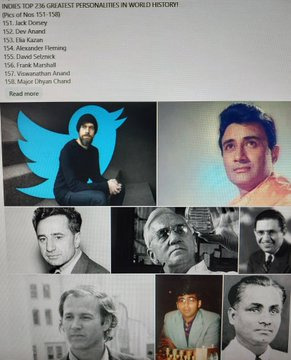
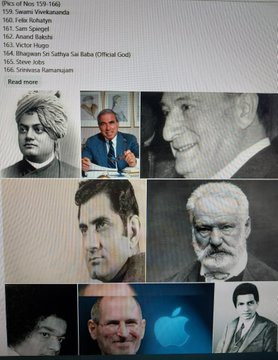
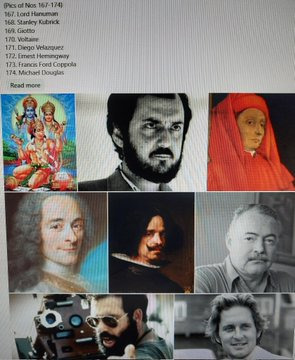
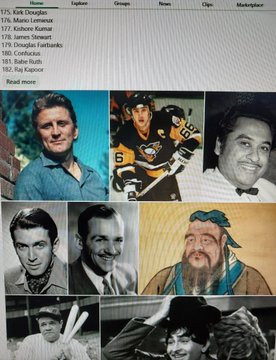
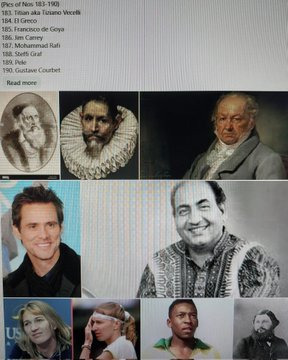
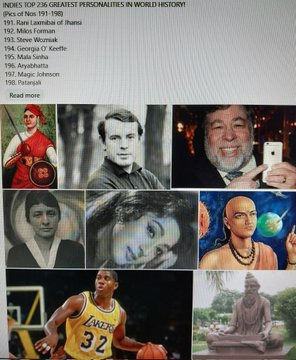
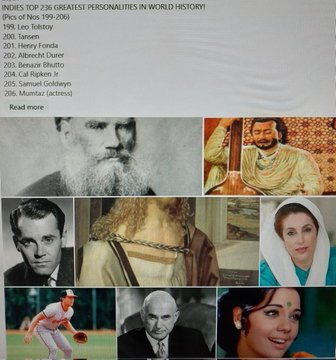

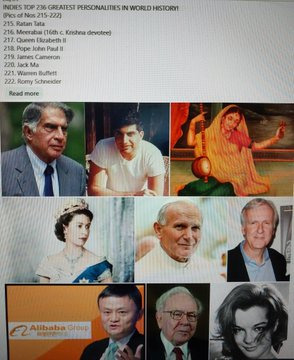

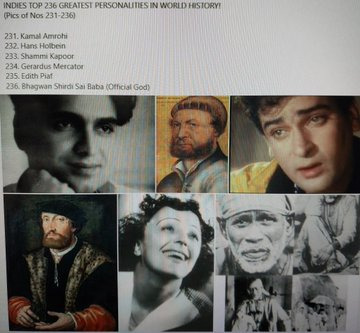
3 notes
·
View notes
Text
Richard Dawkins; he thinks there is a fundamental conflict between science and religion.
This would come have as a surprise to some of the greatest names in science: Nicolaus Copernicus (a monk), Johannes Kepler, Galileo Galilei, Isaac Newton, Robert Boyle, Michael Faraday, Joseph Priestley, James Clerk Maxwell, Charles Darwin, Gregor Mendel (the founder of genetics and abbot of a monastery), Lord Kelvin and Albert Einstein. Plus, many of the pioneers of quantum physics: Werner Heisenberg, Max Plank, Erwin Schrödinger, James Jeans, Louis de Broglie, Wolfgang Pauli and Arthur Eddington. And today's scientists – the astrophysicist Paul Davies, Simon Conway Morris (Professor of Evolutionary Paleobiology at Cambridge), Alasdair Coles (Professor of Neuro-immunology at Cambridge), John Polkinghorne (who was Professor of Mathematical Physics at Cambridge), Russell Stannard, Freeman Dyson ... and Francis Collins, who led the team of 2,400 international scientists on the Human Genome Project and was an atheist until the age of 27, when he became a Christian.
~ John Marsh
3 notes
·
View notes
Text
THE 236 GREATEST PERSONALITIES IN THE ENTIRE KNOWN HISTORY/COLLECTIVE CONSCIOUSNESS OF THIS WORLD! (@INDIES)
ie. THE 236 GREATEST PERSONALITIES IN WORLD HISTORY! (@INDIES)
Rajesh Khanna
Lionel Messi
Leonardo Da Vinci
Online Indie
Muhammad Ali
Joan of Arc
William Shakespeare
Vincent Van Gogh
J. K. Rowling
David Lean
Nadia Comaneci
Diego Maradona
Wolfgang Amadeus Mozart
Meena Kumari
Julius Caesar
Harrison Ford
Ludwig Van Beethoven
William W. Cargill
Fritz Hoffmann-La Roche
Samuel Curtis Johnson
Sam Walton
John D. Rockefeller
Andrew Carnegie
Roy Thomson
Tim Berners-Lee
Marie Curie
James J. Hill
Cornelius Vanderbilt
Roman Polanski
Samuel Slater
J. P. Morgan
Cary Grant
Dmitri Mendeleev
John Harvard
Alain Delon
Ramakrishna Paramhansa (Official God)
The Lumiere Brothers, Auguste & Louis
Carl Friedrich Benz
Michelangelo
Maharishi Mahesh Yogi
Ramana Maharishi
Mark Twain
Swami Sri Yukteswar Giri
Bruce Lee
Bhagwan Krishna (Official God)
Charlemagne
Rene Descartes
John F. Kennedy
Bhagwan Ganesha (Official God)
Walt Disney
Albert Einstein
Nikola Tesla
Alfred Hitchcock
Pythagoras
William Randolph Hearst
Cosimo de’ Medici
Johann Sebastian Bach
Alec Guinness
Nostradamus
Christopher Plummer
Archimedes
Jackie Chan
Guru Dutt
Amma Karunamayi/ Mata Parvati (Official God)
Peter Sellers
Gerard Depardieu
Joseph Safra
Robert Morris
Sean Connery
Petr Kellner
Aristotle Onassis
Usain Bolt
Jack Welch
Alfredo di Stefano
Elizabeth Taylor
Michael Jordan
Paul Muni
Steven Spielberg
Louis Pasteur
Ingrid Bergman
Norma Shearer
Dr. B. R. Ambedkar
Ayn Rand
Jesus Christ (Official God)
Luciano Pavarotti
Alain Resnais
Frank Sinatra
Allah (Official God)
Richard Nixon
Charlie Chaplin
Thomas Alva Edison
Alexander Graham Bell
Wright Brothers
Arjun (of Bhagwan Krishna’s Gita)
Jim Simons
George Lucas
Swami Sri Lahiri Mahasaya
Carl Lewis
Brett Favre
Helen Keller
Bernard Mannes Baruch
Buddha (Official God)
Hugh Grant
K. L. Saigal
Roger Federer
Rash Behari Bose
Tiger Woods
William Blake
Jesse Owens
Claude Miller
Bernardo Bertolucci
Subhash Chandra Bose
Satyajit Ray
Hippocrates
Chiang Kai-Shek
John Logie Baird
Geeta Dutt
Raphael (painter)
Bhagwan Shiva (Official God)
Radha (Ancient Krishna devotee)
George Orwell
Jorge Paulo Lemann
Catherine Deneuve
Pierre-Auguste Renoir
Bill Gates
Bhagwan Ram (Official God)
Michael Phelps
Michael Faraday
Audrey Hepburn
Dalai Lama
Grace Kelly
Mikhail Gorbachev
Vladimir Putin
Galileo Galilei
Gary Cooper
Roger Moore
John Huston
Blaise Pascal
Humphrey Bogart
Rudyard Kipling
Samuel Morse
Wayne Gretzky
Yogi Berra
Barry Levinson
Patrice Chereau (director)
Jerry Lewis
Louis Daguerre
James Watt
Henri Rousseau
Nikita Krushchev
Jack Dorsey
Dev Anand
Elia Kazan
Alexander Fleming
David Selznick
Frank Marshall
Viswanathan Anand
Major Dhyan Chand
Swami Vivekananda
Felix Rohatyn
Sam Spiegel
Anand Bakshi
Victor Hugo
Bhagwan Sri Sathya Sai Baba (Official God)
Steve Jobs
Srinivasa Ramanujam
Lord Hanuman
Stanley Kubrick
Giotto
Voltaire
Diego Velazquez
Ernest Hemingway
Francis Ford Coppola
Michael Douglas
Kirk Douglas
Mario Lemieux
Kishore Kumar
James Stewart
Douglas Fairbanks
Confucius
Babe Ruth
Raj Kapoor
Titian aka Tiziano Vecelli
El Greco
Francisco de Goya
Jim Carrey
Mohammad Rafi
Steffi Graf
Pele
Gustave Courbet
Rani Laxmibai of Jhansi
Milos Forman
Steve Wozniak
Georgia O’ Keeffe
Mala Sinha
Aryabhatta
Magic Johnson
Patanjali
Leo Tolstoy
Tansen
Henry Fonda
Albrecht Durer
Benazir Bhutto
Cal Ripken Jr
Samuel Goldwyn
Mumtaz (actress)
Panini
Nicolaus Copernicus
Pablo Picasso
George Clooney
Olivia de Havilland
Prem Chand
Imran Khan
Pete Sampras
Ratan Tata
Meerabai (16th c. Krishna devotee)
Queen Elizabeth II
Pope John Paul II
James Cameron
Jack Ma
Warren Buffett
Romy Schneider
C. V. Raman
Aung San Suu Kyi
Benjamin Netanyahu
Frank Capra
Michael Schumacher
Steve Forbes
Paramhansa Yogananda
Tom Hanks
Kamal Amrohi
Hans Holbein
Shammi Kapoor
Gerardus Mercator
Edith Piaf
Bhagwan Shirdi Sai Baba (Official God) .

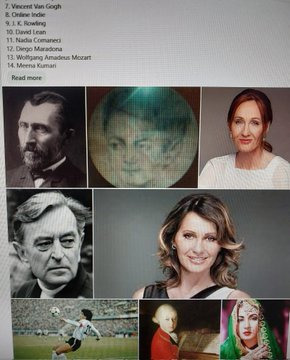
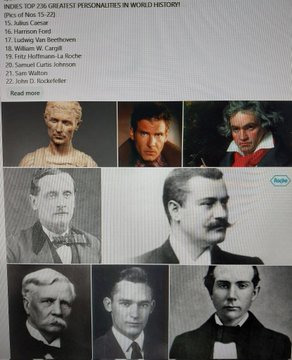
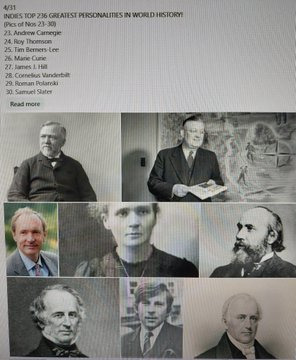
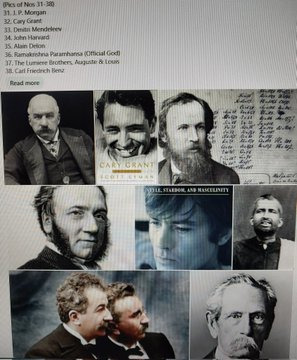




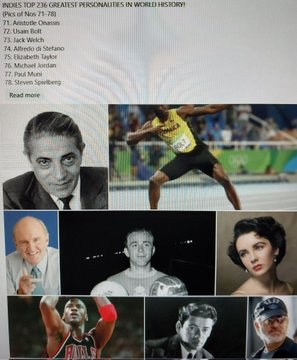
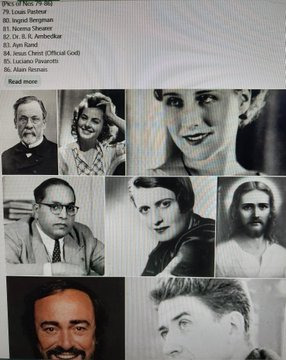
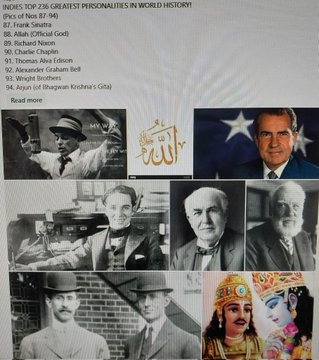


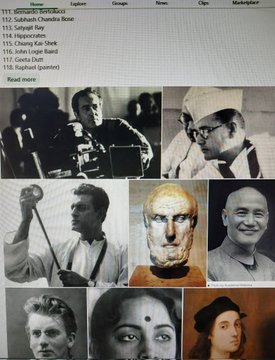


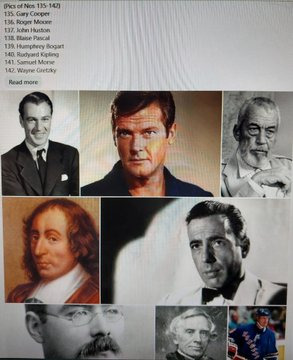
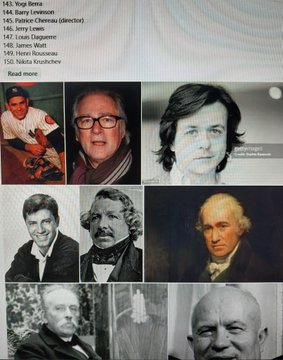


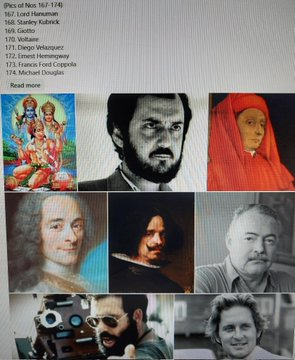

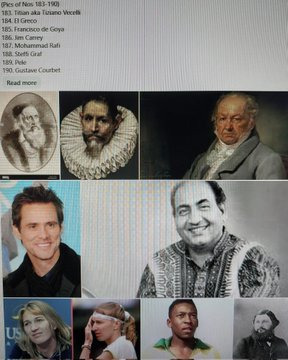
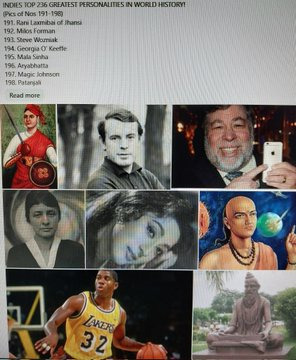
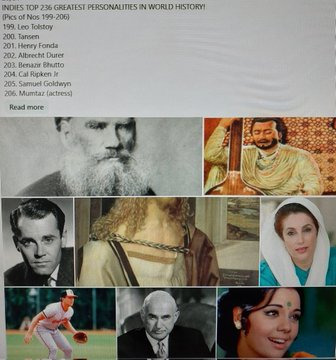
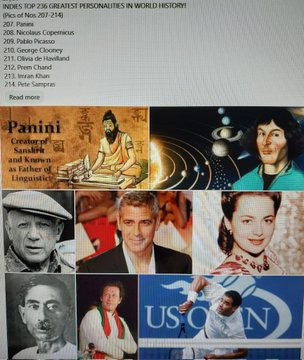
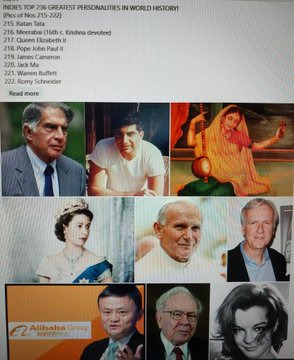
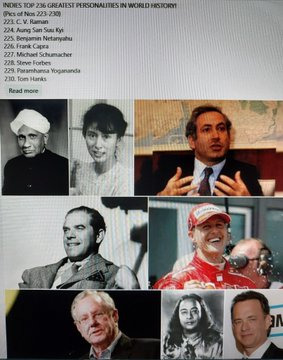
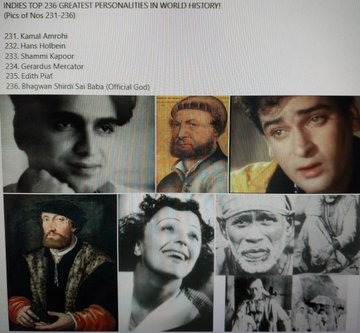
1 note
·
View note
Text
History of vehicles in the world
The very first self-powered road vehicles were powered by steam engines, and by that definition, Nicolas Joseph Cugnot of France built the first automobile in 1769 — recognized by the British Royal Automobile Club and the Automobile Club de France as being the first. So why do so many history books say that the automobile was invented by either Gottlieb Daimler or Karl Benz? It is because both Daimler and Benz invented highly successful and practical gasoline-powered vehicles that ushered in the age of modern automobiles. Daimler and Benz invented cars that looked and worked like the cars we use today. However, it is unfair to say that either man invented "the" automobile.
Internal Combustion Engine: The Heart of the Automobile
An internal combustion engine is an engine that uses the explosive combustion of fuel to push a piston within a cylinder — the piston's movement turns a crankshaft that then turns the car wheels via a chain or a drive shaft. The different types of fuel commonly used for car combustion engines are gasoline (or petrol), diesel, and kerosene.
A brief outline of the history of the internal combustion engine includes the following highlights:
1680 - Dutch physicist, Christian Huygens designed (but never built) an internal combustion engine that was to be fueled with gunpowder.
1807 - Francois Isaac de Rivaz of Switzerland invented an internal combustion engine that used a mixture of hydrogen and oxygen for fuel. Rivaz designed a car for his engine — the first internal combustion powered automobile. However, his was a very unsuccessful design.
1824 - English engineer, Samuel Brown adapted an old Newcomen steam engine to burn gas, and he used it to briefly power a vehicle up Shooter's Hill in London.
1858 - Belgian-born engineer, Jean Joseph Étienne Lenoir invented and patented (1860) a double-acting, electric spark-ignition internal combustion engine fueled by coal gas. In 1863, Lenoir attached an improved engine (using petroleum and a primitive carburetor) to a three-wheeled wagon that managed to complete a historic fifty-mile road trip.
1862 - Alphonse Beau de Rochas, a French civil engineer, patented but did not build a four-stroke engine (French patent #52,593, January 16, 1862).
1864 - Austrian engineer, Siegfried Marcus, built a one-cylinder engine with a crude carburetor and attached his engine to a cart for a rocky 500-foot drive. Several years later, Marcus designed a vehicle that briefly ran at 10 mph, which a few historians have considered as the forerunner of the modern automobile by being the world's first gasoline-powered vehicle (however, read conflicting notes below).
1873 - George Brayton, an American engineer, developed an unsuccessful two-stroke kerosene engine (it used two external pumping cylinders). However, it was considered the first safe and practical oil engine.
1866 - German engineers, Eugen Langen, and Nicolaus August Otto improved on Lenoir's and de Rochas' designs and invented a more efficient gas engine.
1876 - Nicolaus August Otto invented and later patented a successful four-stroke engine, known as the "Otto cycle".
1876 - The first successful two-stroke engine was invented by Sir Dougald Clerk.
1883 - French engineer, Edouard Delamare-Debouteville, built a single-cylinder four-stroke engine that ran on stove gas. It is not certain if he did indeed build a car, however, Delamare-Debouteville's designs were very advanced for the time — ahead of both Daimler and Benz in some ways at least on paper.
1885 - Gottlieb Daimler invented what is often recognized as the prototype of the modern gas engine — with a vertical cylinder, and with gasoline injected through a carburetor (patented in 1887). Daimler first built a two-wheeled vehicle the "Reitwagen" (Riding Carriage) with this engine and a year later built the world's first four-wheeled motor vehicle.
1886 - On January 29, Karl Benz received the first patent (DRP No. 37435) for a gas-fueled car.
1889 - Daimler built an improved four-stroke engine with mushroom-shaped valves and two V-slant cylinders.
1890 - Wilhelm Maybach built the first four-cylinder, four-stroke engine.
Engine design and car design were integral activities, almost all of the engine designers mentioned above also designed cars, and a few went on to become major manufacturers of automobiles. All of these inventors and more made notable improvements in the evolution of the internal combustion vehicles.
The Importance of Nicolaus Otto
One of the most important landmarks in engine design comes from Nicolaus August Otto who in 1876 invented an effective gas motor engine. Otto built the first practical four-stroke internal combustion engine called the "Otto Cycle Engine," and as soon as he had completed his engine, he built it into a motorcycle. Otto's contributions were very historically significant, it was his four-stroke engine that was universally adopted for all liquid-fueled automobiles going forward.
Karl Benz
In 1885, German mechanical engineer, Karl Benz designed and built the world's first practical automobile to be powered by an internal-combustion engine. On January 29, 1886, Benz received the first patent (DRP No. 37435) for a gas-fueled car. It was a three-wheeler; Benz built his first four-wheeled car in 1891. Benz & Cie., the company started by the inventor, became the world's largest manufacturer of automobiles by 1900. Benz was the first inventor to integrate an internal combustion engine with a chassis - designing both together.
Gottlieb Daimler
In 1885, Gottlieb Daimler (together with his design partner Wilhelm Maybach) took Otto's internal combustion engine a step further and patented what is generally recognized as the prototype of the modern gas engine. Daimler's connection to Otto was a direct one; Daimler worked as technical director of Deutz Gasmotorenfabrik, which Nikolaus Otto co-owned in 1872. There is some controversy as to who built the first motorcycle, Otto or Daimler.
The 1885 Daimler-Maybach engine was small, lightweight, fast, used a gasoline-injected carburetor, and had a vertical cylinder. The size, speed, and efficiency of the engine allowed for a revolution in car design. On March 8, 1886, Daimler took a stagecoach and adapted it to hold his engine, thereby designing the world's first four-wheeled automobile. Daimler is considered the first inventor to have invented a practical internal-combustion engine.
In 1889, Daimler invented a V-slanted two cylinder, four-stroke engine with mushroom-shaped valves. Just like Otto's 1876 engine, Daimler's new engine set the basis for all car engines going forward. Also in 1889, Daimler and Maybach built their first automobile from the ground up, they did not adapt another purpose vehicle as they had always been done previously. The new Daimler automobile had a four-speed transmission and obtained speeds of 10 mph.
Daimler founded the Daimler Motoren-Gesellschaft in 1890 to manufacture his designs. Eleven years later, Wilhelm Maybach designed the Mercedes automobile.
If Siegfried Marcus built his second car in 1875 and it was as claimed, it would have been the first vehicle powered by a four-cycle engine and the first to use gasoline as a fuel, the first having a carburetor for a gasoline engine and the first having a magneto ignition. However, the only existing evidence indicates that the vehicle was built circa 1888/89 — too late to be first.
By the early 1900s, gasoline cars started to outsell all other types of motor vehicles. The market was growing for economical automobiles and the need for industrial production was pressing.
The first car manufacturers in the world were French: Panhard & Levassor (1889) and Peugeot (1891). By car manufacturer we mean builders of entire motor vehicles for sale and not just engine inventors who experimented with car design to test their engines — Daimler and Benz began as the latter before becoming full car manufacturers and made their early money by licensing their patents and selling their engines to car manufacturers.
Rene Panhard and Emile Levassor
Rene Panhard and Emile Levassor were partners in a woodworking machinery business when they decided to become car manufacturers. They built their first car in 1890 using a Daimler engine. Edouard Sarazin, who held the license rights to the Daimler patent for France, commissioned the team. (Licensing a patent means that you pay a fee and then you have the right to build and use someone's invention for profit — in this case, Sarazin had the right to build and sell Daimler engines in France.) The partners not only manufactured cars, but they also made improvements to the automotive body design.
Panhard-Levassor made vehicles with a pedal-operated clutch, a chain transmission leading to a change-speed gearbox, and a front radiator. Levassor was the first designer to move the engine to the front of the car and use a rear-wheel-drive layout. This design was known as the Systeme Panhard and quickly became the standard for all cars because it gave a better balance and improved steering. Panhard and Levassor are also credited with the invention of the modern transmission — installed in their 1895 Panhard.
Panhard and Levassor also shared the licensing rights to Daimler motors with Armand Peugeot. A Peugeot car went on to win the first car race held in France, which gained Peugeot publicity and boosted car sales. Ironically, the "Paris to Marseille" race of 1897 resulted in a fatal auto accident, killing Emile Levassor.
Early on, French manufacturers did not standardize car models — each car was different from the other. The first standardized car was the 1894 Benz Velo. One hundred and thirty-four identical Velos were manufactured in 1895.
Charles and Frank Duryea
America's first gasoline-powered commercial car manufacturers were Charles and Frank Duryea. The brothers were bicycle makers who became interested in gasoline engines and automobiles and built their first motor vehicle in 1893, in Springfield, Massachusetts. By 1896, the Duryea Motor Wagon Company had sold thirteen models of the Duryea, an expensive limousine, which remained in production into the 1920s.
Ransome Eli Olds
The first automobile to be mass produced in the United States was the 1901 Curved Dash Oldsmobile, built by the American car manufacturer Ransome Eli Olds (1864-1950). Olds invented the basic concept of the assembly line and started the Detroit area automobile industry. He first began making steam and gasoline engines with his father, Pliny Fisk Olds, in Lansing, Michigan in 1885. Olds designed his first steam-powered car in 1887. In 1899, with a growing experience of gasoline engines, Olds moved to Detroit to start the Olds Motor Works, and produce low-priced cars. He produced 425 "Curved Dash Olds" in 1901, and was America's leading auto manufacturer from 1901 to 1904.
Henry Ford
American car manufacturer, Henry Ford (1863-1947) invented an improved assembly line and installed the first conveyor belt-based assembly line in his car factory in Ford's Highland Park, Michigan plant, around 1913-14. The assembly line reduced production costs for cars by reducing assembly time. Ford's famous Model T was assembled in ninety-three minutes. Ford made his first car, called the "Quadricycle," in June 1896. However, success came after he formed the Ford Motor Company in 1903. This was the third car manufacturing company formed to produce the cars he designed. He introduced the Model T in 1908 and it was a success. After installing the moving assembly lines in his factory in 1913, Ford became the world's biggest car manufacturer. By 1927, 15 million Model Ts had been manufactured.
Another victory won by Henry Ford was a patent battle with George B. Selden. Selden, who had never built an automobile, held a patent on a "road engine", on that basis Selden was paid royalties by all American car manufacturers. Ford overturned Selden's patent and opened the American car market for the building of inexpensive cars.
1 note
·
View note
Text
4 stringed instruments

The frets gave to each note the clarity of an open string-a clear, ringing, penetrating tone that was much prized.īy the second half of the 16th century the viol acquired a significant repertory of music for ensemble, for solo bass, and for the lyra viol, a small bass viol (also called viola bastarda). The breadth of the bridge, which was arched to give the bow separate access to each string, made forceful playing impossible, and the supine position of the bow hand, palm uppermost, encouraged a smooth playing style. Viols are characterized by sloping shoulders deep ribs thin, flat backs and, above all, a vertical playing position, with the bottom of the instrument resting on the knee or held between the legs-hence viola da gamba (Italian: “leg viol”). To these sizes was later added the violone, a double bass viol often tuned an octave below the bass. It was made in three sizes: treble, tenor, and bass, with the bottom string tuned, respectively, to d, G (or A), and D. The viol shares with the Renaissance lute the tuning of its six strings (two fourths, a major third, two fourths) and the gut frets on its neck. Viol, also called viola da gamba, bowed, stringed musical instrument used principally in chamber music of the 16th to the 18th century. The family's hist and most distinguished member, Nicolo, also taught Antonio Stradivari, perhaps the greatest violin maker ever. Northern Italy, the cradle of violin making, remained the major centre until the eighteenth century, especially under the Amati family of Cremona. while the fiddle was widelv used by troubadours and developed into the lira da braccia (the violin's closest ancestor). The rebec was popular at dances and later evolved into the kit. It derived from various medieval bowed instruments, descendants of central Asian models brought into tenth-century Spam and southern Italy by the Arabs. The violin offered an unprecedented range of expression, intensity, and nuance, and inspired great music and great performers. The development of the violin family was a triumph tor instrument making. The great violin maker Stradivari planned to make a viola d'amore in 1716 (though if he did, it has not survived) and Bach made expressive use of the instrument in solo parts in the St John Vissiou. Developed from viols, they have additional strings that vibrate m sympathy with the bowed strings - a feature that points to possible Islamic origins. Mozart's father Leopold admired both the baryton and its shoulder-held relative, the viola d'amore. Otherwise, the instrument played a minor role m music and was little known outside Austria and southern Germany. Joseph Haydn brought the baryton to its high point in musical history when he composed 175 works for the instrument tor his patron Prince Nicolaus Joseph Esterhazy. Unlike violins, smaller viols were also held body downwards, on the lap. the bass viol was held body downwards between the legs like a cello. Viols were eventually superseded by the louder and more expressive violin family, but Bach was still using the bass viol in his Passions and m the last Bniihlenbiiiv concerto m the early eighteenth century. Viols were probably carried to Italy by the famous Borgia family, two of whom became popes, and their use is recorded at the wedding ot Lucrezia Borgia in 1502. Their delicate, nasal sound soon made them popular as chamber instruments, though they lacked the percussive quality useful for dance music. This family of bowed instruments first appeared in the late fifteenth century in the Valencia region of Spain.

0 notes
Text
an endearing marxist syllabus
Summer and Fall/Autumn 2021 – Winter 2022
I. What is the Left? – What is Marxism?
Thursdays, starting July 29th
6:00 - 8:00 p.m.
SEC Plaza, Memorial Union, Oregon State University
2501 SW Jefferson Way, Corvallis, OR 97331
• required / + recommended reading
Marx and Engels readings pp. from Robert C. Tucker, ed., Marx-Engels Reader (Norton 2nd ed., 1978)
Week A. Introduction: Capital in history | Jul. 29, 2021
• Max Horkheimer, "The little man and the philosophy of freedom" (1926–31)
• epigraphs on modern history and freedom by Louis Menand (on Marx and Engels), Karl Marx, on "becoming" (from the Grundrisse, 1857–58), and Peter Preuss (on history)
+ Being and becoming (freedom in transformation) chart of terms
• Chris Cutrone, "Capital in history" (2008)
+ Capital in history timeline and chart of terms
+ video of Communist University 2011 London presentation
+ Capitalist contradiction chart of terms
• Cutrone, "The Marxist hypothesis" (2010)
• Cutrone, “Class consciousness (from a Marxist persective) today” (2012)
+ G.M. Tamas, "Telling the truth about class" [HTML] (2007)
+ Robert Pippin, "On Critical Theory" (2004)
+ Rainer Maria Rilke, "Archaic Torso of Apollo" (1908)
Week B. 1960s New Left I. Neo-Marxism | Aug. 5, 2021
• Martin Nicolaus, “The unknown Marx” (1968)
+ Commodity form chart of terms
+ Capitalist contradiction chart of terms
+ Organic composition of capital chart of terms
+ Marx on surplus-value chart of terms
• Theodor W. Adorno, “Late Capitalism or Industrial Society?” (AKA “Is Marx Obsolete?”) (1968)
• Moishe Postone, “Necessity, labor, and time” (1978)
+ Postone, “Interview: Marx after Marxism” (2008)
+ Postone, “History and helplessness: Mass mobilization and contemporary forms of anticapitalism” (2006)
+ Postone, “Theorizing the contemporary world: Brenner, Arrighi, Harvey” (2006)
Week C. 1960s New Left II: Gender and sexuality | Aug. 12, 2021
The situation of women is different from that of any other social group. This is because they are not one of a number of isolable units, but half a totality: the human species. Women are essential and irreplaceable; they cannot therefore be exploited in the same way as other social groups can. They are fundamental to the human condition, yet in their economic, social and political roles, they are marginal. It is precisely this combination — fundamental and marginal at one and the same time — that has been fatal to them.
— Juliet Mitchell, "Women: The longest revolution" (1966)
+ Capitalist contradiction chart of terms
• Juliet Mitchell, “Women: The longest revolution” (1966)
• Clara Zetkin and Vladimir Lenin, “An interview on the woman question” (1920)
• Theodor W. Adorno, “Sexual taboos and the law today” (1963)
• John D’Emilio, “Capitalism and gay identity” (1983)
Week D. 1960s New Left III. Anti-black racism in the U.S. | Aug. 19, 2021
As a social party we receive the Negro and all other races upon absolutely equal terms. We are the party of the working class, the whole working class, and we will not suffer ourselves to be divided by any specious appeal to race prejudice; and if we should be coaxed or driven from the straight road we will be lost in the wilderness and ought to perish there, for we shall no longer be a Socialist party.
— Eugene Debs, "The Negro in the class struggle" (1903)
+ Eugene Debs, "The Negro in the class struggle" (1903)
+ Debs, "The Negro and his nemesis" (1904)
+ Capitalist contradiction chart of terms
• Richard Fraser, “Two lectures on the black question in America and revolutionary integrationism” (1953)
+ Fraser, "For the materialist conception of the Negro struggle" (1955)
• James Robertson and Shirley Stoute, “For black Trotskyism” (1963)
+ Spartacist League, “Black and red: Class struggle road to Negro freedom” (1966)
+ Bayard Rustin, “The failure of black separatism” (1970)
• Adolph Reed, “Black particularity reconsidered” (1979)
+ Reed, “Paths to Critical Theory” (1984)
Week E. Frankfurt School precursors | Aug. 26, 2021
+ Capitalist contradiction chart of terms
• Wilhelm Reich, “Ideology as material power” (1933/46)
• Siegfried Kracauer, “The mass ornament” (1927)
+ Kracauer, “Photography” (1927)
+ Being and becoming (freedom in transformation) / immanent dialectical critique chart of terms
Week F. Radical bourgeois philosophy I. Rousseau: Crossroads of society | Sep. 2, 2021
To be radical is to go to the root of the matter. For man, however, the root is man himself.
— Marx, Critique of Hegel’s Philosophy of Right (1843)
Whoever dares undertake to establish a people’s institutions must feel himself capable of changing, as it were, human nature, of transforming each individual, who by himself is a complete and solitary whole, into a part of a larger whole, from which, in a sense, the individual receives his life and his being, of substituting a limited and mental existence for the physical and independent existence. He has to take from man his own powers, and give him in exchange alien powers which he cannot employ without the help of other men.
— Jean-Jacques Rousseau, On the Social Contract (1762)
• Max Horkheimer, "The little man and the philosophy of freedom" (1926–31)
• epigraphs on modern history and freedom by James Miller (on Jean-Jacques Rousseau), Louis Menand (on Marx and Engels), Karl Marx, on "becoming" (from the Grundrisse, 1857–58), and Peter Preuss (on history)
+ Rainer Maria Rilke, "Archaic Torso of Apollo" (1908)
+ Robert Pippin, "On Critical Theory" (2004)
+ Being and becoming (freedom in transformation) chart of terms
• Jean-Jacques Rousseau, Discourse on the Origin of Inequality (1754) PDFs of preferred translation (5 parts): [1] [2] [3] [4] [5]
+ Capital in history timeline and chart of terms
• Rousseau, selection from On the Social Contract (1762)
Week G. Radical bourgeois philosophy II. Adam Smith: On the wealth of nations (part 1) | Sep. 9, 2021
• Adam Smith, selections from The Wealth of Nations
Volume I [PDF]
Introduction and Plan of the Work
Book I: Of the Causes of Improvement…
I.1. Of the Division of Labor
I.2. Of the Principle which gives Occasion to the Division of Labour
I.3. That the Division of Labour is Limited by the Extent of the Market
I.4. Of the Origin and Use of Money
I.5 Of the Real and Nominal Price of Commodities
I.6. Of the Component Parts of the Price of Commodities
I.7. Of the Natural and Market Price of Commodities
I.8. Of the Wages of Labour
I.9. Of the Profits of Stock
Book III: Of the different Progress of Opulence in different Nations
III.1. Of the Natural Progress of Opulence
III.2. Of the Discouragement of Agriculture in the Ancient State of Europe after the Fall of the Roman Empire
III.3. Of the Rise and Progress of Cities and Towns, after the Fall of the Roman Empire
III.4. How the Commerce of the Towns Contributed to the Improvement of the Country
Week H. Radical bourgeois philosophy III. Adam Smith: On the wealth of nations (part 2) | Sep. 16, 2021
• Smith, selections from The Wealth of Nations
Volume II [PDF]
IV.7, Of Colonies
V.1. Of the Expences of the Sovereign or Commonwealth
Week I. Radical bourgeois philosophy IV. What is the Third Estate? | Sep. 23, 2021
• Abbé Emmanuel Joseph Sieyès, What is the Third Estate? (1789) [full text]
+ Bernard Mandeville, The Fable of the Bees (1732)
Week J. Radical bourgeois philosophy V. Kant and Constant: Bourgeois society | Sep. 30, 2021
• Immanuel Kant, "Idea for a universal history from a cosmopolitan point of view" and "What is Enlightenment?" (1784)
+ Being and becoming (freedom in transformation) chart of terms
+ Kant's 3 Critiques [PNG] and philosophy [PNG] charts of terms
• Benjamin Constant, "The liberty of the ancients compared with that of the moderns" (1819)
+ Jean-Jacques Rousseau, Discourse on the origin of inequality (1754)
+ Rousseau, selection from On the social contract (1762)
Week K. Radical bourgeois philosophy VI. Hegel: Freedom in history | Oct. 7, 2021
• G.W.F. Hegel, Introduction to the Philosophy of History (1831) [HTML] [PDF pp. 14-128] [Audiobook]
+ Being and becoming (freedom in transformation) chart of terms
Week 1. What is the Left? I. Capital in history | Oct. 14, 2021
• Max Horkheimer, "The little man and the philosophy of freedom" (1926–31)
• epigraphs on modern history and freedom by Louis Menand (on Marx and Engels), Karl Marx, on "becoming" (from the Grundrisse, 1857–58), and Peter Preuss (on history)
+ Being and becoming (freedom in transformation) chart of terms
• Chris Cutrone, "Capital in history" (2008)
+ Capital in history timeline and chart of terms
+ video of Communist University 2011 London presentation
+ Capitalist contradiction chart of terms
• Cutrone, "The Marxist hypothesis" (2010)
• Cutrone, “Class consciousness (from a Marxist persective) today” (2012)
+ G.M. Tamas, "Telling the truth about class" [HTML] (2007)
+ Robert Pippin, "On Critical Theory" (2004)
+ Rainer Maria Rilke, "Archaic Torso of Apollo" (1908)
Week 2. What is the Left? II. Utopia and critique | Oct. 21, 2021
• Max Horkheimer, selections from Dämmerung (1926–31)
• Adorno, “Imaginative Excesses” (1944–47)
• Leszek Kolakowski, “The concept of the Left” (1958)
• Herbert Marcuse, "Note on dialectic" (1960)
• Marx, To make the world philosophical (from Marx's dissertation, 1839–41), pp. 9–11
• Marx, For the ruthless criticism of everything existing (letter to Arnold Ruge, September 1843), pp. 12–15
+ Capitalist contradiction chart of terms
+ Being and becoming (freedom in transformation) / immanent dialectical critique chart of terms
Week 3. What is Marxism? I. Socialism | Oct. 28, 2021
• Marx, selections from Economic and philosophic manuscripts (1844), pp. 70–101
+ Commodity form chart of terms
+ Being and becoming (freedom in transformation) / immanent dialectical critique chart of terms
+ Capitalist contradiction chart of terms
• Marx and Friedrich Engels, selections from the Manifesto of the Communist Party (1848), pp. 469–500
• Marx, The coming upheaval (from The Poverty of Philosophy, 1847), pp. 218–19
Week 4. What is Marxism? II. Revolution in 1848 | Nov. 4, 2021
• Marx, Address to the Central Committee of the Communist League (1850), pp. 501–511 and Class struggle and mode of production (letter to Weydemeyer, 1852), pp. 218–220
• Engels, The tactics of social democracy (Engels's 1895 introduction to Marx, The Class Struggles in France), pp. 556–573
• Marx, selections from The Class Struggles in France 1848–50 (1850), pp. 586–593
• Marx, selections from The 18th Brumaire of Louis Bonaparte (1852), pp. 594–617
Week 5. What is Marxism? III. Bonapartism | Nov. 11, 2021
+ Karl Korsch, "The Marxism of the First International" (1924)
• Marx, Inaugural address to the First International (1864), pp. 512–519
• Marx, selections from The Civil War in France (1871, including Engels's 1891 Introduction), pp. 618–652
+ Korsch, Introduction to Marx, Critique of the Gotha Programme (1922)
• Marx, Critique of the Gotha Programme, pp. 525–541
• Marx, Programme of the Parti Ouvrier (1880)
Week 6. What is Marxism? IV. Critique of political economy | Nov. 18, 2021
The fetish character of the commodity is not a fact of consciousness; rather it is dialectical, in the eminent sense that it produces consciousness. . . . [P]erfection of the commodity character in a Hegelian self-consciousness inaugurates the explosion of its phantasmagoria.
— Theodor W. Adorno, letter to Walter Benjamin, August 2, 1935
+ Commodity form chart of terms
+ Capitalist contradiction chart of terms
+ Organic composition of capital chart of terms
+ Marx on surplus-value chart of terms
• Marx, selections from the Grundrisse (1857–61), pp. 222–226, 236–244, 247–250, 276–293 ME Reader pp. 276–281
• Marx, Capital Vol. I, Ch. 1 Sec. 4 "The fetishism of commodities" (1867), pp. 319–329
+ Being and becoming (freedom in transformation) / immanent dialectical critique chart of terms
Winter break readings
+ Richard Appignanesi and Oscar Zarate / A&Z, Introducing Lenin and the Russian Revolution / Lenin for Beginners (1977)
+ Sebastian Haffner, Failure of a Revolution: Germany 1918–19 (1968)
+ Tariq Ali and Phil Evans, Introducing Trotsky and Marxism / Trotsky for Beginners (1980)
+ James Joll, The Second International 1889–1914 (1966)
+ Carl Schorske, The SPD 1905-17: The Development of the Great Schism (1955)
+ J.P. Nettl, Rosa Luxemburg (1966) [Vol. 1] [Vol. 2]
+ Edmund Wilson, To the Finland Station: A Study in the Writing and Acting of History (1940), Part II. Ch. (1–4,) 5–10, 12–16; Part III. Ch. 1–6
Week 8. Nov. 25, 2021 U.S. Thanksgiving break
Week 7. What is Marxism? V. Reification | Dec. 2, 2021
• Georg Lukács, “The phenomenon of reification” (Part I of “Reification and the consciousness of the proletariat,” History and Class Consciousness, 1923)
+ Commodity form chart of terms
+ Reification chart of terms
+ Capitalist contradiction chart of terms
+ Organic composition of capital chart of terms
+ Being and becoming (freedom in transformation) / immanent dialectical critique chart of terms
Week 9. What is Marxism? VI. Class consciousness | Dec. 9, 2021
• Lukács, “Class Consciousness” (1920), Original Preface (1922), “What is Orthodox Marxism?” (1919), History and Class Consciousness (1923)
+ Capitalist contradiction chart of terms
+ Reification chart of terms
+ Being and becoming (freedom in transformation) / immanent dialectical critique chart of terms
+ Herbert Marcuse, "Note on dialectic" (1960)
+ Marx, Preface to the First German Edition and Afterword to the Second German Edition (1873) of Capital (1867), pp. 294–298, 299–302
Week 10. What is Marxism? VII. Ends of philosophy | Dec. 16, 2021
• Korsch, “Marxism and philosophy” (1923)
+ Capitalist contradiction chart of terms
+ Being and becoming (freedom in transformation) / immanent dialectical critique chart of terms
+ Herbert Marcuse, "Note on dialectic" (1960)
+ Marx, To make the world philosophical (from Marx's dissertation, 1839–41), pp. 9–11
+ Marx, For the ruthless criticism of everything existing (letter to Arnold Ruge, September 1843), pp. 12–15
+ Marx, "Theses on Feuerbach" (1845), pp. 143–145
19 notes
·
View notes
Photo
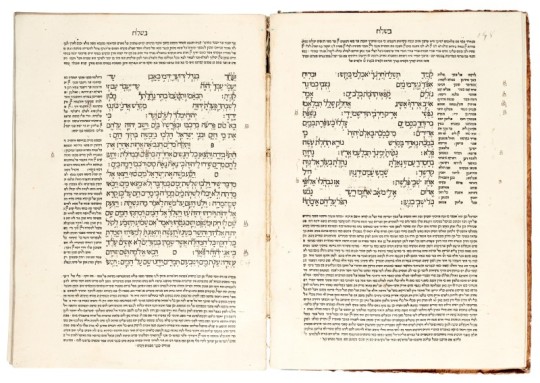


Torah with the Targum of Onkelos and commentary of Rashi, edited by Joseph Hayyim ben Aaron Strasbourg Zarfati. Bologna: Abraham ben Hayyim, 25 January 1482
The Hebrew text is elegantly framed by the Targum of Onkelos in Aramaic to the side, and the commentary of Rashi at head and foot. Rashi's eleventh-century commentary on the Torah had been one of the first Hebrew books ever printed, in Rome in c. 1469-72, and was regularly reprinted; it also proved influential on later commentators such as Nicolaus of Lyra. The Targum of Onkelos, attributed to the first-century Roman convert to Judaism, is the authoritative paraphrase of the text into a western dialect of Aramaic (probably in Palestine, with subsequent Babylonian influence), and was considered important for the interpretation of the original Hebrew. The edition was proofread by Joseph Hayyim Zarfati, who also wrote the colophon.
The printing of Hebrew is hampered by the same problems as printing in Greek, with numerous diacritics (vowel points in Hebrew) to be accommodated; this is the first book printed with the Hebrew text fully vocalised and with cantillation marks. "It constitutes a remarkable technical achievement" (A. Offenberg, A Choice of Corals, 1992, p.141); Offenberg goes on to observe that it took Italian printers another ten years or so to develop a similarly successful Greek type face. [x]
13 notes
·
View notes
Photo
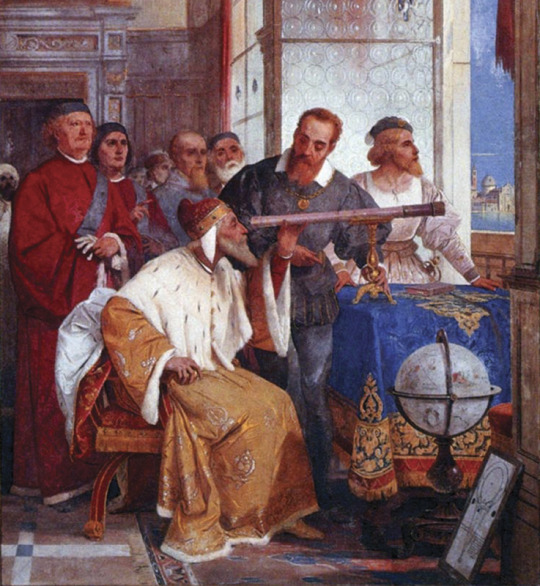
~ Galileo Galilei showing the Doge of Venice, Leonardo Donati, how to Use the Telescope~
Giuseppe Bertini
1858, fresco, Villa Andrea Ponti, Varese.
It was 25 of August 1609 when the 90th Doge, Leonardo Donato, and other members of the Venetian senate accompanied Galileo to the top of the campanile of St Mark’s Basilica, where each took it in turn to look through the instrument.
The meeting had been arranged by Galileo’s friend, Paolo Sarpi, who was a scientist, lawyer and statesman employed by the Venetian government. The two were both professors at the University of Padua.
Galileo, whose knowledge of the universe led him to be called the ‘father of observational astronomy’, was for many years wrongly credited with the invention of the telescope when in fact the first to apply for a patent for the device was a Dutch eyeglass maker named Hans Lippershey.
Galileo was the first to realize the potential of the telescope for astronomical study.
He was able to make out mountains and craters on the moon, as well as a ribbon of diffuse light arching across the sky ~ the Milky Way. Galileo also discovered the rings of Saturn, sunspots and four of Jupiter's moons.

~ Imaginative painting showing Galileo Galilei displaying his telescope to Leonardo Donato~
Henry-Julien Detouche, c. 1900.
It was his findings on Jupiter’s moons in January 1610 that would lead him indirectly into trouble with the Roman Inquisition over his belief in heliocentrism, the concept that the sun and not the Earth was the centre of the solar system, as had been theorized by the Polish scientist Nicolaus Copernicus in the previous century.
In observing the three objects in proximity to the planet Jupiter that he had originally thought to be distant stars, he noticed that their position relative to the planet changed in a way that would have been inexplicable if they had really been fixed stars.
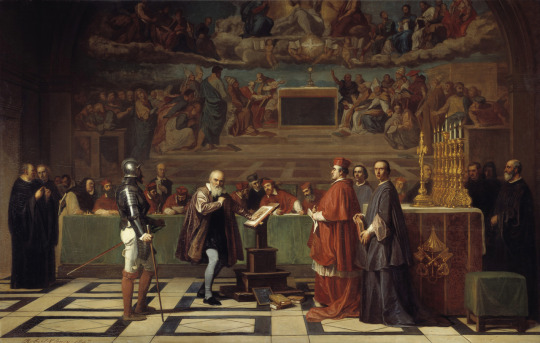
~ Galileo before the Holy Office ~
Joseph-Nicolas Robert-Fleury, 1797–1890
1847.
One day he noticed that one of them had disappeared altogether only to reappear later and within a few days had concluded that they were orbiting Jupiter. When, later in the year, he discovered that the planet Venus had ‘phases’ similar to the earth’s Moon, when differences in appearance suggested different positions in the sky, he began to subscribe firmly to the Copernican theory.
This flew in the face of a major part of Roman Catholic belief, based on the Aristotelian principle that all heavenly bodies orbited the Earth.
In time, Galileo was found guilty of heresy and forced to recant his views under threat of torture. He would have spent the last years of his life in prison had the court not shown some clemency and commuted his sentence to house arrest.
Many centuries passed until 1992 that the church (Vatican) admitted that Galileo’s theory was the right one.

#Galileo Galilei#astronomy#venice#paintings#artworks#art of the day#artist#history#photo of the day#best photo#historical portrait#heliocentrismo#galileo
44 notes
·
View notes
Text
Assignment 1
Name: Isehaq Ibrahim
ID: 127398
Date: Sun, 15 November 2020
The birth of the automobile from 1800s
An automobile (or car) is a wheeled motor vehicle used for people transportation. Cars run often on roads, seat two to eight people, have four tires, and not used for goods transportation. Automobile came into global use during 20th century, and the economies of the great power became dependent on their manufacture and sale.
The Benz-Morvan is the first automobile in the world (in current concept) for its owner Karl Benz, who obtained a patent on his car in 1886. Cars became widely available to the public in the early twentieth century, among the first automobile that were accessible to the public was an American automobile made by Ford Motor Company. Cars spread quickly in the US and replaced wagons, but they took longer time to enter other parts of the world.
In 1769, Nicolas-Joseph Cugnot built the first steam-powered automobile, in 1803 Hayden Wischett designed the first car powered by internal combustion engine (hydrogen) and Samuel Brown invented the first internal combustion engine (industrially applied) in 1823.
In 1870, Siegfried Marcus developed internal combustion engines like two-cycle combustion engine, and he designed a gasoline engine and magnetic ignition engine, Nicolaus Otto obtained a patent for a four-stroke internal combustion engines that worked in gasoline, Rudolf Diesel invented the a four-stroke diesel engines.
Karl Benz developed a petrol or gasoline-powered automobile in 1885, it was the first production car and it was powered by single-cylinder four-stroke engine. The first four-wheeled petrol car was built in Britain in 1892 by Frederick Bremer, Frederick William Lanchester built another one in 1895, who received a patent for disc brake. In 1908, Ford Motors Company began producing its car, Model T, it became the first automobile to be mass-produced on a mobile assembly line, Ford produced more than 15 million cars between 1913 and 1927 of the Model T.
Over time, Automobile became have many comfort and luxury features that were not present in the primitive car, such as: Lighting, radio and sound system, closed cars, which means the availability of air condition and comfortable seat. By entering the twenty-first century, automobile had more than fancy specification like surveillance cameras and sensors, until arrive to discover autonomous driving.
4 notes
·
View notes
Text
Events 3.5
363 – Roman emperor Julian leaves Antioch with an army of 90,000 to attack the Sasanian Empire, in a campaign which would bring about his own death.
1046 – Nasir Khusraw begins the seven-year Middle Eastern journey which he will later describe in his book Safarnama.
1279 – The Livonian Order is defeated in the Battle of Aizkraukle by the Grand Duchy of Lithuania.
1496 – King Henry VII of England issues letters patent to John Cabot and his sons, authorising them to explore unknown lands.
1616 – Nicolaus Copernicus's book On the Revolutions of the Heavenly Spheres is added to the Index of Forbidden Books 73 years after it was first published.
1766 – Antonio de Ulloa, the first Spanish governor of Louisiana, arrives in New Orleans.
1770 – Boston Massacre: Five Americans, including Crispus Attucks, are fatally shot by British troops in an event that would contribute to the outbreak of the American Revolutionary War (also known as the American War of Independence) five years later.
1811 – Peninsular War: A French force under the command of Marshal Victor is routed while trying to prevent an Anglo-Spanish-Portuguese army from lifting the Siege of Cádiz in the Battle of Barrosa.
1824 – First Anglo-Burmese War: The British officially declare war on Burma.
1825 – Roberto Cofresí, one of the last successful Caribbean pirates, is defeated in combat and captured by authorities.
1836 – Samuel Colt patents the first production-model revolver, the .34-caliber.
1850 – The Britannia Bridge across the Menai Strait between the island of Anglesey and the mainland of Wales is opened.
1860 – Parma, Tuscany, Modena and Romagna vote in referendums to join the Kingdom of Sardinia.
1868 – Mefistofele, an opera by Arrigo Boito, receives its premiere performance at La Scala.
1872 – George Westinghouse patents the air brake.
1906 – Moro Rebellion: United States Army troops bring overwhelming force against the native Moros in the First Battle of Bud Dajo, leaving only six survivors.
1912 – Italo-Turkish War: Italian forces are the first to use airships for military purposes, employing them for reconnaissance behind Turkish lines.
1931 – The British Raj: Gandhi–Irwin Pact is signed.
1933 – Adolf Hitler's Nazi Party receives 43.9% at the Reichstag elections, which allows the Nazis to later pass the Enabling Act and establish a dictatorship.
1936 – First flight of K5054, the first prototype Supermarine Spitfire advanced monoplane fighter aircraft in the United Kingdom.
1939 – Spanish Civil War: The National Defence Council seizes control of the republican government in a coup d'etat, with the intention of negotiating an end to the war.
1940 – Six high-ranking members of the Soviet politburo, including Joseph Stalin, sign an order for the execution of 25,700 Polish intelligentsia, including 14,700 Polish POWs, in what will become known as the Katyn massacre.
1942 – World War II: Japanese forces capture Batavia, capital of Dutch East Indies, which is left undefended after the withdrawal of the KNIL garrison and Australian Blackforce battalion to Buitenzorg and Bandung.
1943 – First Flight of the Gloster Meteor, Britain's first combat jet aircraft.
1944 – World War II: The Red Army begins the Uman–Botoșani Offensive in the western Ukrainian SSR.
1946 – Cold War: Winston Churchill coins the phrase "Iron Curtain" in his speech at Westminster College, Missouri.
1953 – Joseph Stalin, the longest serving leader of the Soviet Union, dies at his Volynskoe dacha in Moscow after suffering a cerebral hemorrhage four days earlier.
1960 – Indonesian President Sukarno dismissed the Dewan Perwakilan Rakyat (DPR), 1955 democratically elected parliament, and replaced with DPR-GR, the parliament of his own selected members.
1963 – American country music stars Patsy Cline, Hawkshaw Hawkins, Cowboy Copas and their pilot Randy Hughes are killed in a plane crash in Camden, Tennessee.
1965 – March Intifada: A Leftist uprising erupts in Bahrain against British colonial presence.
1966 – BOAC Flight 911, a Boeing 707 aircraft, breaks apart in mid-air due to clear-air turbulence and crashes into Mount Fuji, Japan, killing all 124 people on board.
1970 – The Treaty on the Non-Proliferation of Nuclear Weapons goes into effect after ratification by 43 nations.
1974 – Yom Kippur War: Israeli forces withdraw from the west bank of the Suez Canal.
1978 – The Landsat 3 is launched from Vandenberg Air Force Base in California.
1979 – Soviet probes Venera 11, Venera 12 and the German-American solar satellite Helios II all are hit by "off the scale" gamma rays leading to the discovery of soft gamma repeaters.
1981 – The ZX81, a pioneering British home computer, is launched by Sinclair Research and would go on to sell over 11⁄2 million units around the world.
1982 – Soviet probe Venera 14 lands on Venus.
1991 – Aeropostal Alas de Venezuela Flight 108 crashes in Venezuela, killing 45.
1993 – Palair Macedonian Airlines Flight 301 crashes at Skopje International Airport in Petrovec, North Macedonia, killing 83.
2003 – In Haifa, 17 Israeli civilians are killed in the Haifa bus 37 suicide bombing.
2012 – Tropical Storm Irina kills over 75 as it passes through Madagascar.
2018 – Syrian civil war: The Syrian Democratic Forces (SDF) pause the Deir ez-Zor campaign due to the Turkish-led invasion of Afrin.
2021 – Pope Francis begins a historical visit to Iraq amidst the COVID-19 pandemic.
2021 – Twenty people are killed and 30 injured in a suicide car bombing in Mogadishu, Somalia.
0 notes